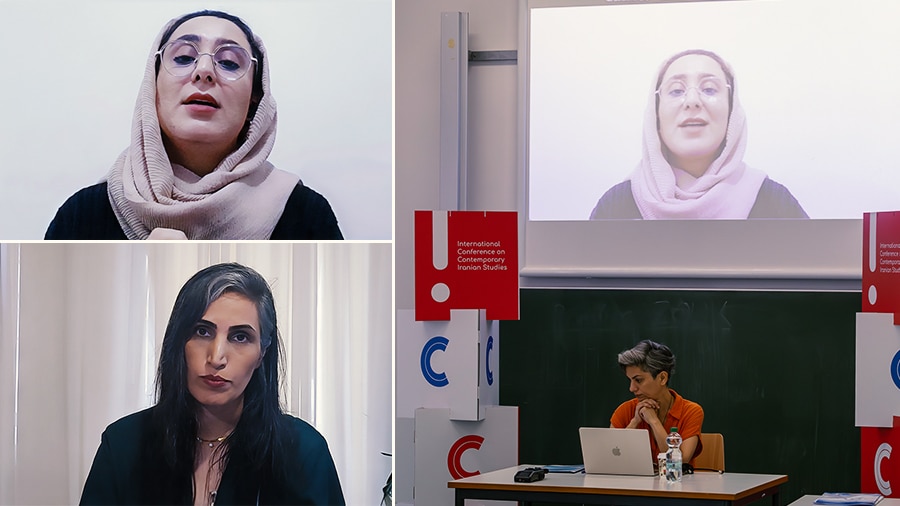Kheyzaran Esmaeilzadeh
“National Art” in Visual Arts of Modern Iran and its Transformations
Marzieh Sabet Eghlidi
Review of the Key Categories of “Architecture History of Iran” in Art and People Magazine from 1962 To 1979
Moderator: Negin Shiraghaei
Kheyzaran Esmaeilzadeh examines the trajectory of modern Iranian visual arts and its intricate relationship with nationalism and identity through a multidisciplinary lens. She highlights the interplay between politics and art, focusing on the concept of “nationality” as it manifests in the evolution of modern Iranian painting.
The analysis spans from the late Qajar era to contemporary times, detailing six distinct periods that reflect shifts in political and cultural paradigms. The early 20th century witnessed the rise of Kamal-ol-Molk and his students, who initiated landscape painting as a subconscious expression of a burgeoning national consciousness.
During Reza Shah’s reign, modernization efforts and state-sponsored nationalism influenced the revival of traditional arts like miniature painting and the creation of historical imagery.
Under Mohammad Reza Shah, modernist approaches diverged, with some artists adopting folkloric and ethnographic themes reflecting Third Worldism, while others explored abstract modernism using traditional motifs.
Post-1979 revolution, nationalist themes gave way to Islamic ideological expressions, significantly altering the visual arts. The 1990s saw a return to modernist experimentation, revisiting motifs from mid-20th-century art while reinterpreting traditional forms like miniatures and ethnic patterns.
By the 2000s and 2010s, contemporary art in Iran became a platform for addressing sociopolitical narratives, eschewing nationalist frameworks in favor of market-oriented and globally resonant aesthetics, incorporating elements such as calligraphy, Qajar motifs, and veiling.
Marzieh Sabet Eghlidi’s discussion of the Honar va Mardom journal sheds light on the historiography of Iranian architecture from 1961 to 1979. This period marked a shift in the study of Iranian architectural history, transitioning from Western-dominated perspectives to contributions by Iranian scholars.
Influenced by institutional changes, including the departure of French administrators and the establishment of the Ministry of Culture and Arts, Iranian researchers began exploring the nuanced definitions of history, architecture, and Iranian identity.
The journal served as a critical medium for bridging public understanding with academic scholarship, though its influence was limited due to sociopolitical constraints.



